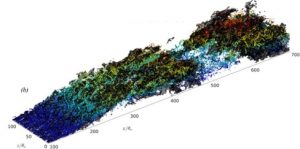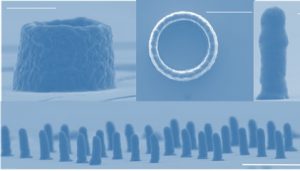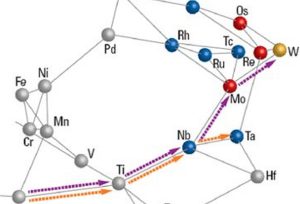Our professors use nano-technology, 3D printing, nature-inspired materials and more to pursue research into some of the world’s biggest challenges
Thermal and fluid sciences
This research area incorporates fluid mechanics, thermodynamics and heat transfer to address issues related to energy, environment, health, materials, transportation and manufacturing.
As one example, we’re looking into the use of nano technology to harvest energy from vibrations from cars and machines to power everyday items such as cell phones.
 Theory and simulation
Theory and simulation
Theory and simulation provide a basis for understanding physical phenomena that are not accessible from experimental methods. Our research focus includes material properties at molecular levels, laminar and turbulent fluid flows, convective heat transfer with moving boundaries, and piezoelectricity.
For instance, our research into the dynamics of turbulence can be used to improve the aerodynamics of planes as well as to understand airborne transmission of viruses.
 Design, manufacturing and controls
Design, manufacturing and controls
This research area encompasses solid mechanics, mechanics of materials, composite materials, mechanism design, dynamics and vibrations.
One initiative seeks to optimize the blast and impact response of composite structures, using bio-inspired polymeric or metallic foams. These materials could be utilized to protect the nation’s critical infrastructure or safeguard our military.
 Micro- and nanoscale engineering
Micro- and nanoscale engineering
Some of the current research topics include micro-structured surfaces for heat transfer augmentation and molecular dynamic simulations on nanomaterials. This could provide insight into how advanced engineering materials perform various thermal and loading conditions.
 Material sciences and engineering
Material sciences and engineering
Materials science delves into how a solid material’s chemical makeup and structure determines its properties. With this understanding, materials can be selected or designed for specific applications.
Our researchers are focused on designing, fabricating and testing, novel wood based composite materials, thermal energy storage materials, and high performance alloys for aerospace and nuclear power applications. They are using computer based simulations to design metallic alloys for additive manufacturing and discover materials for energy applications.
 Blast and impact dynamics
Blast and impact dynamics
Understanding blast and impact dynamics helps create better protective systems – from wind shields to bumpers, from sports padding to body armor.
Our state-of-the-art laboratory allows for innovative methods to test materials and systems at extreme conditions. Some of our current research looks at how to strengthen materials through cross-stitching designs and various composite approaches (metal-polymer, wood-rubber and natural-fiber reinforced).
